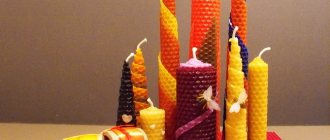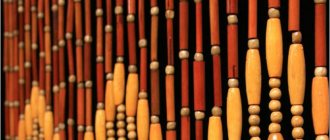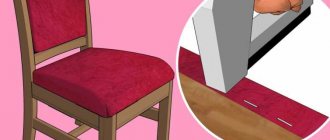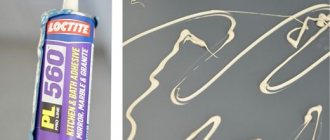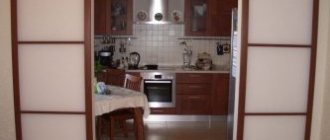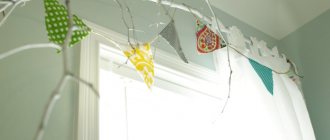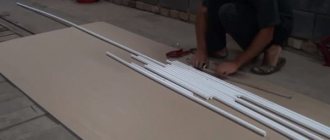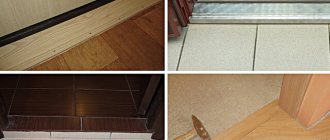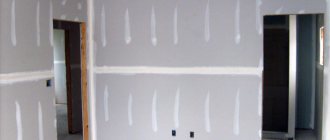Features of a mirror in the house
A mirror is an interior item used to reflect objects, animals, people, decorating rooms. From time immemorial, the accessory has attracted the fairer sex. The morning of many girls and women begins with an approach to him. The item was also used for magical rituals, and therefore it can be considered multifunctional.
The process of mirror restoration is very painstaking.
Interesting! There are many reasons why mirrors are not used in modern homes: decoration, division of zones, interior decoration, etc.
Depending on the lighting used, general style, personal preferences, you can buy either a simple accessory or one with effects on the surface.
To restore the surface of a mirror that has minor damage, grinding and polishing are used.
Tinted mirrors are especially popular. They find their application not only in minimalist styles, but also in luxurious art deco.
How to make and configure a mirror site on another hosting? (brief instructions)
- Register your 2nd domain
- When registering, specify DNS servers
- Login to your hosting control panel
- Go to: “Web hosting” – “Sites” – “Name of original site” – “Synonym”
- Enter the required domain name as a synonym (with or without the "www" prefix)
- Confirm enabling DNS support in the dialog box
- Domain registration can take up to 8 hours
Which domain is better: with or without the www prefix?
At the dawn of the development of the Internet, its inventor in the modern sense, Tim Berners-Lee, proposed combining information distributed on different servers into the World Wide Web. For this purpose, the hypertext markup language HTML, the hypertext transfer protocol HTTP, and universal URL identifiers were developed. With their help, it was possible to unite all sites and unify the addresses of the servers on which the information presented on them was located (for example, the mail identifier was used for mail servers, and FTP for FTP servers).
If a user saw the prefix www in the name of a resource, he immediately understood that it was located on the World Wide Web. Now all users already understand that all addresses are in it. But they haven’t abandoned it yet, because having a prefix has not only disadvantages, but also advantages.
Disadvantages of URLs with the www prefix
- Negative impact on site usability (the user is forced to enter 4 more characters)
- Lack of meaning (everyone already understands that the site is “on the web”)
Pros of URLs with the www prefix
- Many users unconsciously start typing the site name with the prefix
- When working with information offline, it is immediately clear that its source is the web (important when promoting printed materials and outdoor advertising)
- Make short addresses visually more attractive (compare: “ya.ru” and “www.ya.ru”)
Thus, the choice of the main domain is a matter of preference of the owner. But keep in mind that the main search engines - Google and Yandex - are themselves accessible at addresses with the prefix:
How to check and glue a website mirror
Method 1. Checking through the address bar
To find out which mirror is the main one, enter the address of your resource in the address bar of your browser with the prefix www and press enter. If you are redirected to the same address, but without www, then the main mirror does not have a prefix.
That is, you type www.gusarov-group.by:
and you are automatically taken to:
At the same time, of the glued mirrors, only one site is promoted and participates in the search - the main mirror. That is why you need to carefully indicate links to the resource being promoted, otherwise they will not be taken into account by the search engine.
Method 2. Check using the Yandex query language
You can use the Yandex query language, which narrows the search area. To do this, you need to enter options for the site mirror with and without a prefix in the Yandex search bar according to the following example:
url:gusarov-group.by | url:www.gusarov-group.by
The results will display a link to the page that the specified URLs lead to.
In the example you can see that the mirror is merged with the main domain (or excluded from the output in another way).
Other options are possible:
- There are 2 results. This means that the process of determining the main mirror is still ongoing, or a special mirror robot has not yet indexed your site in order to properly glue the mirrors together.
- There are a lot of results in the output. Most likely, you made a mistake when entering the operator. Please check if your request is correct.
- No results available. Your resource is not indexed by the search engine.
Setting up site mirrors
Redirect
To ensure that the domain does not fall under penalties, immediately after creation, the technical specialist must implement the correct redirection to the main domain - a 301 redirect. In this case, the search robot, when visiting the resource, does not begin indexing and immediately assigns it the status of a mirror.
Editing the Robots.txt file
This method is the answer to the question of how to merge site mirrors through the admin panel. On the main domain and all duplicates of the resource, you need to place a special file Robots.txt containing the Host directive indicating the address of the main site.
This line “tells” search engines that the site www.yoursite.by should be considered the main domain, while yoursite.by will be considered a mirror.
If for some reason this does not help, you can force the search engines to specify the correct mirror hierarchy.
Setting up via Yandex Webmaster
Go to Yandex Webmaster – Indexing settings – Main mirror. Specify the desired site.
Setting up via Google Webmaster Panel
Open Google Webmaster Panel – Site Management – Change Address. Specify the desired site.
How to post website mirrors?
Posting occurs automatically approximately 2 weeks after the resources cease to be duplicates and begin to provide different content.
How to restore a mirror yourself
Any piece of furniture will sooner or later lose its original appearance. Of course, if a mirror breaks, there is only one way out - to recycle it. But minor defects can be restored. Mirror restoration is a complex, painstaking process.
Restoring a mirror at home is not a labor-intensive task and does not require much expense or time.
Experienced specialists in this field are able to put many fragments together and restore the original integrity. Scratches, dust, minor chips - all this is eliminated independently. Moreover, there is no need to purchase expensive tools.
Small damages are easier to repair at home using improvised means.
Important! Using high-quality and correct substances will return your accessories to their former attractiveness and shine. The main condition is to correctly calculate the dosage.
Preparation for the procedure
Finding a specialist who can restore amalgam is difficult. This process is not only lengthy, but also expensive. So why shell out such a sum of money and waste time if you can solve the problem yourself.
Sometimes restoring a mirror costs more than buying a new mirror.
Before you begin restoring a damaged mirror with your own hands, you need to perform several steps. To restore a large accessory inserted into the frame, it must be released from it. If this is not possible, the structure is placed on a flat, hard surface.
Before restoration, the mirror must be prepared.
Before minor repairs, it is enough to wipe off the dust and wash off the dirt. If possible, the attribute is left on the wall, thus simplifying repairs.
Materials and tools
After watching videos or photographs showing how to restore a mirror, it becomes clear how simple it is. Everyone has a set to carry out their plans at hand:
- scissors and napkins;
- degreaser;
- foam sponge;
- tassels;
- transparent glue;
- hard brush;
- glass cleaner.
To replace amalgam, many people use foil, which is thin but durable. Glue with a composition intended for working with glass. Its structure should be transparent, both before application and after hardening.
Step-by-step instruction
Before you think about how to restore a defective mirror at home, you need to look at the procedure. If you skip one of the stages, you will not be able to achieve the result.
Removing chips and scratches
Methods can be different; at home, those that do without specialized tools are preferable.
Given the desire and time, any home craftsman can carry out the restoration himself.
The simplest options:
- Toothpaste. Squeeze out a few peas and rub in with a flannel cloth using rotational movements. Once the paste has dried, the surface is carefully polished. Previously existing defects will no longer be noticeable.
- Nail polish. It is recommended to fill deep chips or scratches with a substance and polish them. Due to the fact that transparent varnish has a special consistency, it is used to repair mirrors. The substance is applied to the damaged area with a brush, the excess is removed, and all you have to do is wait for it to dry. Gently wipe the surface with a soft cloth; a slight shine should appear.
As you can see, it is not difficult to restore minor defects at home.
Cleaning Tarnished Surfaces
High humidity, bright rays of the sun - sooner or later this causes mirrors to fade or stains to form on them. To make the accessory shine again as before, you can use water, chalk and vinegar essence.
The method for preparing the solution is simple: add a spoonful of essence and the same amount of chalk to a glass of water. Immediately before use, the mass is heated and infused for several minutes. Place a few drops into a fluffy cloth and wipe the surface of the mirror with them.
Gently wipe the surface of the mirror.
Important! The method is relevant for attributes with an aluminum reflective layer.
Very dark stains can be removed with a mixture of water, magnesia (ammonia) and gasoline.
Amalgam restoration
A defect that appears on the back of the product is visually eliminated using foil. The mirror is removed from the frame or other structure and placed on a soft and flat surface so that the front side faces down.
Foil will help restore the mirror.
The required piece of foil is cut, smoothed, and glued to the defect site. A few minutes until it dries completely and there is no damage.
Frame replacement
No matter how beautiful the restored mirror becomes, little will change against the background of the old frame. Therefore, when repairing an accessory, do not forget about its “shell”. Some paint wooden frames, making them visually more attractive, while others prefer to replace them completely.
Be creative when choosing a frame for your mirror.
After watching a video on the Internet, it becomes clear that you can make a frame yourself, or you can purchase a ready-made one. There is nothing difficult about replacing it. The mirror is removed from the wall, the existing bolts are carefully unscrewed, and the accessory is removed.
You can find many designs of mirror frames on the internet.
In exactly the same way, it is inserted into a new frame, fixed with bolts or other devices.
Interesting! It is not recommended to insert a mirror that is too large into a new frame yourself; it is better to call a family member for help.
Decorating a mirror
A wooden frame that has lost its former appearance and become dull can be updated with stain or varnish of the desired color. Subsequently, beads, shells, mosaics, sticks and much more are used for decoration. It is enough to show a little imagination and you will be able to create something amazing from scrap materials.
Making a frame out of wood is not difficult.
Another solution is to partially decorate the mirror. For this purpose, pebbles, remains of disks, and polymer clay figures can be used. Accessories are attached with glue and double-sided tape. The mirror itself can also be partially decorated with beads, flowers, and painted with artistic paints. Many people like tinting.
Is a carved frame an original decoration?
There are many ways to restore mirrors, suitable for minor damage or larger defects. Do not be afraid, through experiments, trial and error, a difficult task will turn into something exciting and interesting.
Repairing the surface of a mirror will require patience and investment.
What is a site mirror?
This is an exact or nearly exact copy of a website that is accessible on the Internet at a different URL.
Web optimizers use this concept in different contexts.
For example, if you place exactly the same content at the addresses moy-sayt.by and moy-sayt.bel, then search engines will consider these sites to be mirrors. When indexing, they match more than just the top web pages. Before recognizing resources as duplicates, robots analyze up to 100% of the content.
When creating a site, two versions of it are automatically created: with the www prefix and without it. Search engines consider these versions to be mirrors, even if their URLs are changed. To remove a duplicate, domains are “glued together”.
When creating a site, two versions of it are automatically generated at different URLs. Search engines recognize them as mirrors even after changing URLs.
In addition, a mirror is a domain that is attached to the main site. When switching to a duplicate, the user is automatically redirected to the main domain.
Why do you need a site mirror?
What is a website mirror and why create one? The site owner and the optimizer will answer these questions differently.
Resource owners create mirrors to solve the following problems:
- Collection of type-in traffic. Users do not always accurately enter the URL of the desired site in the browser address bar. Especially if it contains a hyphen or letters with different reading options (often the user remembers how the site name sounds, and not how it is spelled). A mirror with a configured redirect will solve this problem.
- Increasing resource stability. If for some reason the server on which the main version of the resource is located becomes unavailable, users are automatically redirected to a copy of the site stored on an alternative server. In addition, copies of the site on different servers help redistribute the load during peak times of the influx of visitors.
- Transition to a new domain. Creating a mirror helps maintain authority and site users if for some reason the company decides to change its name and site domain.
- Domain reservation. It involves creating a mirror of a commercial website on a similar domain so that it is not occupied by a competitor. For example, for the owners of the conditional site “iphone-minsk.by”, it is advisable to occupy the domain “minsk-iphone.by”, placing a mirror of the main resource on it.
- For data backup. An extra copy of the site can help out if problems arise with the main resource.
Webmasters use site mirrors to solve the following problems:
- Promotion. If you need to promote a website in different regions, which include different national domain zones (.by, .ru, .de) or different industry domains (.com, .cc, .ii).
- Output from under the filter. In some cases, creating a mirror allows a site to regain lost positions after pessimization in search results due to search engine sanctions.
- Increased download speed. The presence of a mirror does not directly affect SEO optimization, but it reduces the number of failures, which improves behavioral factors.
